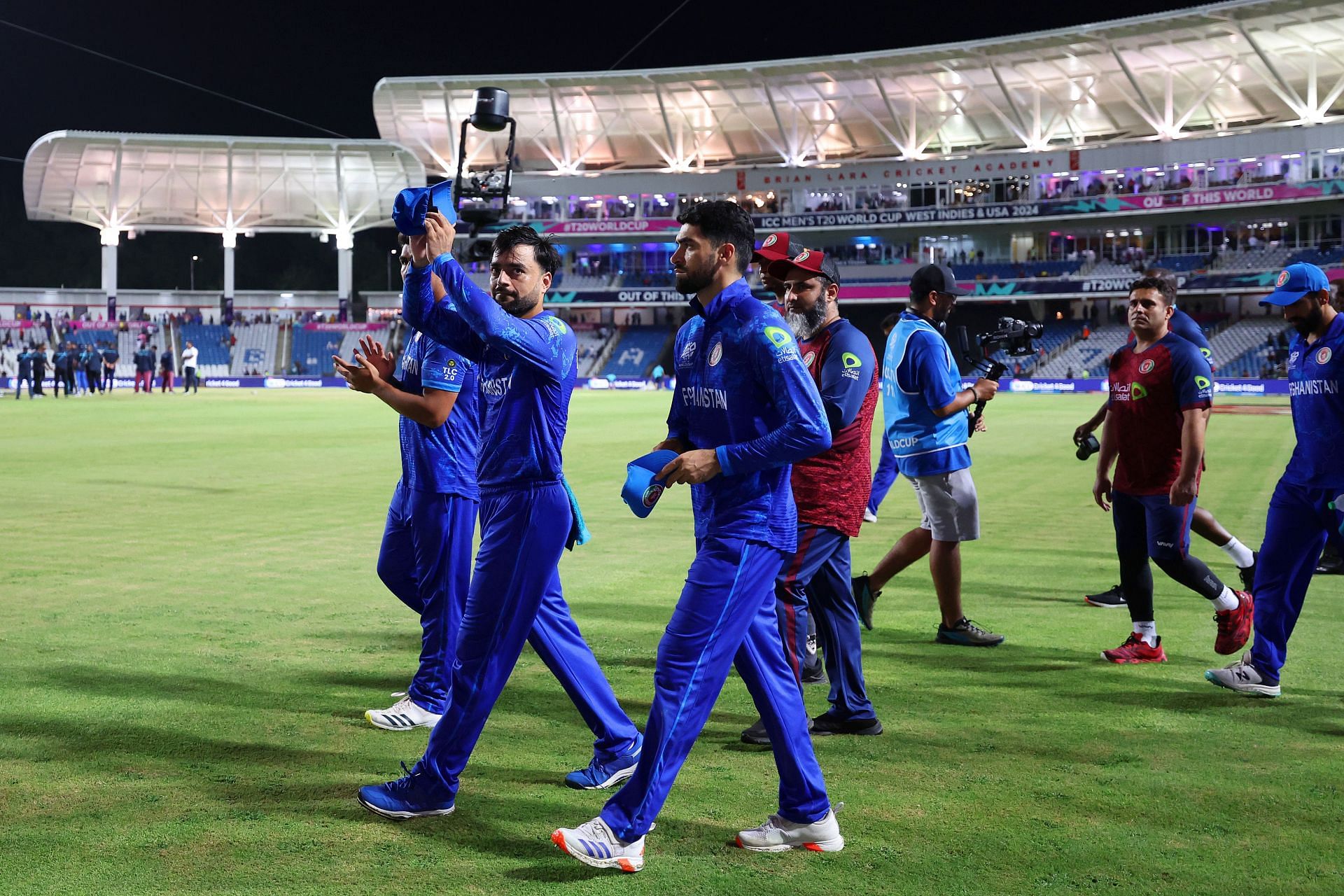
3 biggest lessons for Afghanistan from the 2024 T20 World Cup
Afghanistan's fairy tale run in the 2024 T20 World Cup came to a bitter end after a nine-wicket loss to South Africa in the semi-final stage on Thursday, June 27. Led by Rashid Khan, they were bowled out for 56 in the biggest game of their history so far at the Brian Lara Stadium in Trinidad.
However, the tame defeat does not take away the exceptional cricket that they have played throughout the tournament. The subcontinent side racked up some famous wins along the way, most notably the ones against Australia and New Zealand.
Although Afghanistan can certainly be proud of their performance, and ruining almost everyone's predictions (in a good way), there are still some aspects that hold them back from being a bonafide heavyweight. They need to work on some more areas to ensure that this spike in performance is not just a one-off and is a sign of bigger and better things to come.
On that note, let us take a look at the three biggest lessons for Afghanistan from the 2024 T20 World Cup.
#1 Openers cannot bail Afghanistan out every time
One of the biggest positives for Afghanistan was the way their openers reigned supreme over the conditions. Rahmanullah Gurbaz and Ibrahim Zadran scored a combined total of 422 runs, and although this presents Afghanistan in a good light, it does not bode well from the team's perspective.
Afghanistan flourished whenever the pair put on a dominant stand, but on the occasions that they could not, they looked a different side altogether. The middle order has always been a concern for Afghanistan, but the need for new blood in the department, now that everything else is clicking, could not be more obvious.
Whichever way Afghanistan proceeds with their middle-order conundrum, whether it be giving the existing candidates rope to prove themselves, or bringing in new personnel, they will have to shoulder some of the batting load. The misbalance and disparity could only lead to trouble, as one cannot expect an opening pair to put on mammoth partnerships and play out the majority of the overs every time.
The middle-order batters will have to be ready to play all sorts of roles. Whether it be rescuing the innings after a top-order collapse or making the most of the platform when the openers do succeed. As of now, they are not good at either.
#2 Closer to heavyweights than minnows in terms of skill, but not temperament
Calling Afghanistan minnows and terming their triumphs as upsets would lead to people questioning ball knowledge. Afghanistan have proved time and time again that they can match the heavyweights in terms of pure skill, now that they have world-class pacers and a few quality batters as well.
However, Afghanistan still need the temperament to be at home during the high-pressure games. There are times when they look nervy and out of sorts when the pressure is on. They have to find a way to be comfortable and at ease in such situations.
While there is no obvious on-the-spot solution to this particular issue, apart from consistently performing in big events and gaining from the experience. They have done so in successive tournaments in the form of the 2023 ODI World Cup and the 2024 T20 World Cup, but there is still a lot of work to be done, and only time can improve it.
#3 Slow, sluggish pitches are not universally common
Even though it might be a little harsh to state this, the conditions played a huge role in Afghanistan's progress into the semi-finals. Yes, their skill and execution had to be spot on, and due credit should be given for the same, but one could arguably say that the pitches in the Caribbean were the perfect canvasses for the subcontinent side to flaunt their art.
However, at the same time, Afghanistan needs to be this clinical on other types of surfaces as well, and not just be a one-trick pony. They will have to increase their squad depth and develop players who come into the fray horses-for-courses selection style eventually when exposed to different conditions.
Almost all of Afghanistan's wins came on tacky wickets where their skiddy pacers and proficient spinners could have a command over proceedings. However, they faltered in a dismal fashion on a batting-friendly strip against the West Indies and a seam-friendly track in the semi-final.